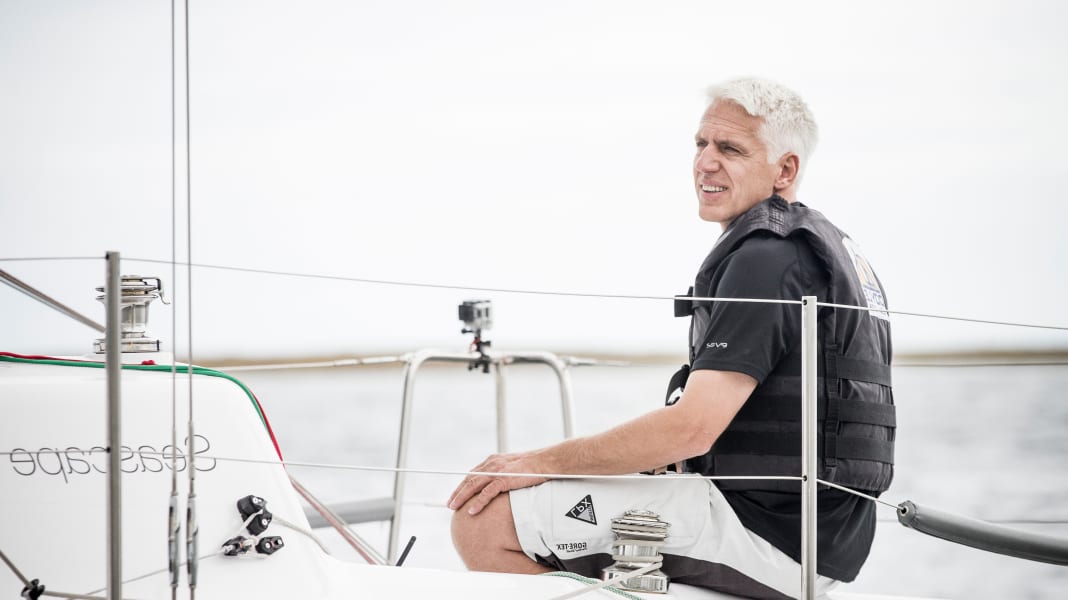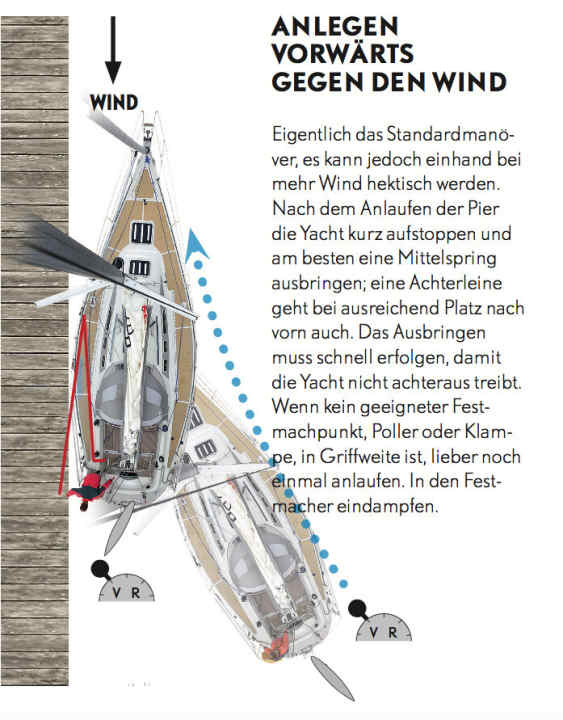Manoeuvring: Harbour manoeuvres: 9 mooring variants for single-handed sailors
Lars Bolle
· 31.08.2025

Sometimes nothing happens for a long time and then everything happens at once. This is a truism that sailors experience first-hand time and time again when unfortunate circumstances at sea come together in a very short space of time. An idyllic sailing day in summer, for example, ends with a thunderstorm - the harbour is not reached before the first gusts hit the yacht. All it takes is for the second person on board to sprain their ankle just before entering the harbour and suddenly no longer be able to help with the manoeuvre with all their strength. The following therefore applies: even in difficult circumstances and in a narrow harbour basin, skippers should be able to control the boat single-handed and drive a mooring.
Modern yachts with advantages
If you want to acquire knowledge about the behaviour of your own yacht directly and without outside help, you should try it out in a wide variety of conditions. Skippers with modern yachts have a clear advantage here - but also a disadvantage. The increasingly wider sterns simplify some manoeuvres and make others possible in the first place. The distance between the anchor point, such as the stern cleat, and the centre of the boat creates a lever that allows the yacht to be turned. In addition, modern sterns are usually open and the railing wires can be removed. This makes it very easy for the helmsman to reach a pile or the pier when travelling backwards towards it. Which, by the way, is highly recommended.
However, the split lateral plan of newer yachts, with a narrow, deep keel and free-standing rudder, also has advantages when manoeuvring if used correctly. It is true that such yachts drift quite quickly and violently over the bow in crosswinds, which is a disadvantage that should not be underestimated. On the other hand, they are relatively stable with the stern pointing in the direction of the wind, which is known as the wind vane effect. As such yachts can also be steered in a very controlled manner when going astern, this opens up new possibilities for harbour manoeuvres via the stern.
With the following berthing scenarios for single-handed berths, you are also well prepared for difficult conditions. Click on the images to enlarge the texts and manoeuvre sequences.

Mooring forwards against the wind is actually nothing special: the pier is approached carefully and a centre spring is deployed. The boat can be easily stopped against drifting backwards by placing it around a bollard.

If the wind is parallel to the pier, sailing backwards against the wind is also a sensible option. In this case, the stern approaches the pier first (this area is very wide on modern yachts) and therefore comes close to the pier early. Disadvantage: The wind still whistles into the cockpit even when mooring.

Letting the wind push you comfortably into the gap and casually staying behind the wheel - it's not quite that easy after all. Because if you don't manage to deploy the stern cleat mooring line and then tuck into it in forward gear, you will be pushed further back...

Offshore wind and the boat should be alongside the pier. How does it work? Attach the centre spring to the bollard and then steam in: the whole boat then slowly sucks up.

Dreamlike into the box: With centre jumps deflected into the cockpit, this is no problem even single-handed. The prerequisite is thorough preparation of the jumps.

The supreme discipline: reversing into the box despite a strong crosswind. Once again, deflected mooring lines make it possible. A feat in three steps.

If strong winds threaten to push the yacht forwards into the box with too much speed, this somewhat unusual-looking method will do the trick. A long line is deployed to one of the piles in the neighbouring row and the yacht is then very slowly "roped down" into its own box. This is one of the safest methods.
There is no pier nearby for these two special manoeuvres. Instead, the aim is to anchor the boat in a controlled manner or moor it to a mooring ring. The central idea behind both manoeuvres is that the helmsman should ideally not leave the cockpit. If he does, the yacht will drift away and cross the wind.

Scenario 1: Dropping the ground anchor over the stern first can be useful if the anchorage is limited in space and the iron is to be dropped at a specific point, or in tidal waters where the yacht would drift significantly in strong currents because the helmsman cannot steam against the current and drop the anchor at the bow at the same time. The anchor can therefore be dropped over the stern, where the single-handed sailor has everything within reach. However, this only works really well with a chain lead that is completely collected in a bucket at the stern and an attached anchor cable that is already attached to the bow and ideally led back to the helmsman. Otherwise, the chain running along the hull could leave unsightly scratches.

Scenario 2: If buoys are approached astern, the helmsman can easily deploy a mooring line via the stern. He also keeps the buoy in view for as long as possible and does not risk running over it. As a variation on step two, the mooring line can also be brought aft directly to the bow by hand. But beware: this is only possible in very little wind and without a current. Otherwise the transverse yacht can develop enormous forces. Alternatively, one end of the mooring line can be placed on the centre cleat first. Then bring the other end from aft to the bow and tie it off, followed by the end from the centre cleat to the bow. In this way, one end of the mooring line is always secured on board and the skipper has to apply less than half the force, as the friction on the buoy also reduces the pulling force on the loose end.


